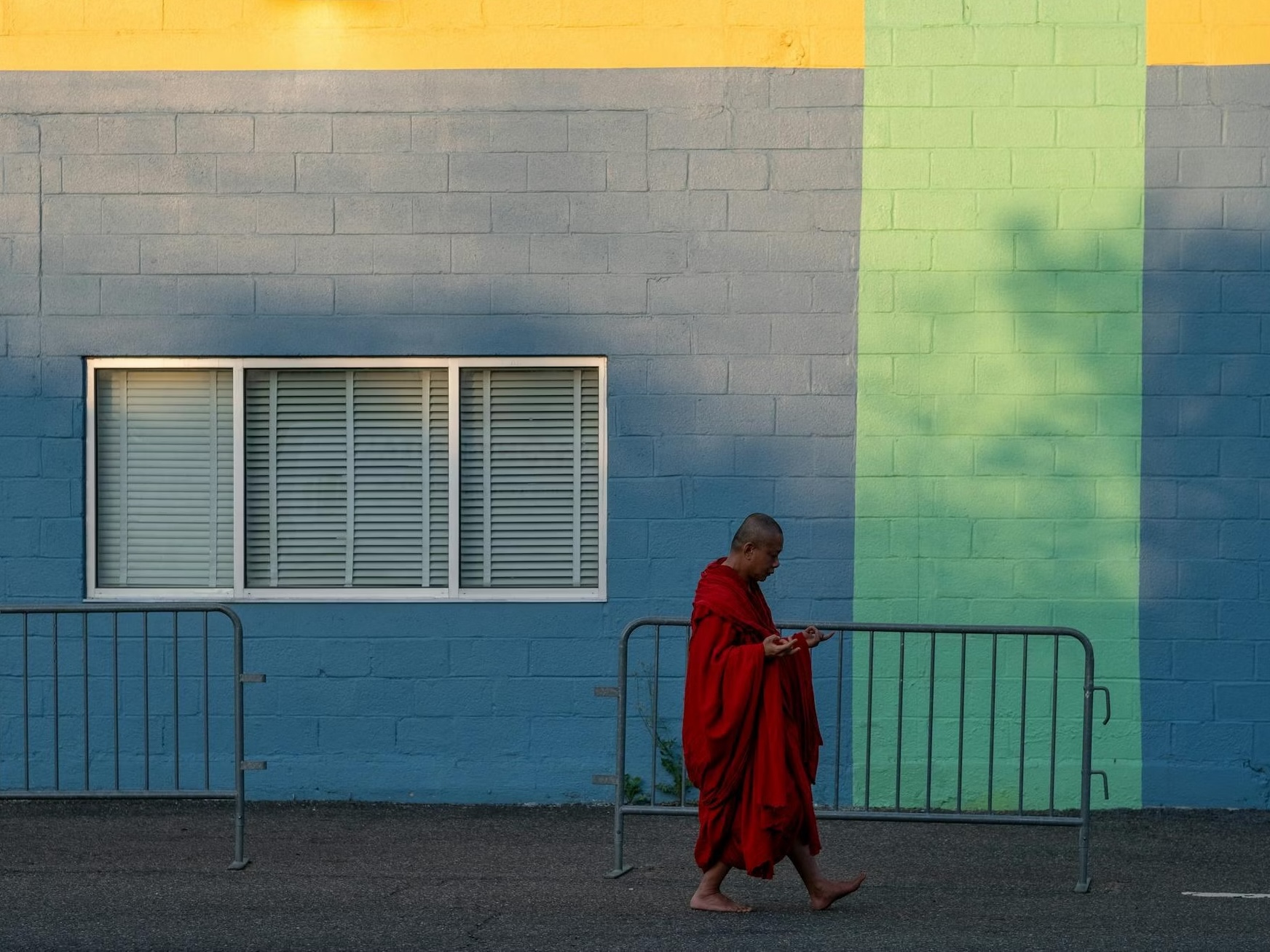
The tenth Walker film is set in Washington, D.C. Two lonely souls embark on separate journeys, occasionally crossing paths but never meeting. Nothing transpires between them. There is no story.
EN
“You see a physical person, with his physical movement, conveying an abstract concept. You see his body moving, walking at a fixed speed. A temporal flow. Why should I film this?
The reason why I wanted to do something like the Walker series is rooted in my obsession with the idea of [7th-century monk] Xuanzang and the characteristics of the times he lived. There was no car, no train, no airplane and no cell phone. He just walked. He is Xuanzang. He cannot walk fast or walk slow. He can just walk forward. I think I experienced the highest degree of artistic freedom when I was doing the Walker series, because it’s not about a story, not even about meanings. It’s painting.”
Tsai Ming-liang1
“To prepare for this one [Abiding Nowhere], I went out and did sketches, like a painter. Can you get a sketch into the cinema? […] I’m trying to change the idea of cinema. It can be like a portrait or poetry or a statue. […] We may have been misunderstanding film. Often we believed that art is a form of storytelling. […] In the future none of my films will have a script. I know how the industry limits filmmakers’ creativity. But remember, a script is not the same thing as a film.”
Tsai Ming-liang2
“The Walker series technically began with a carte blanche ad commission from a Taiwanese mobile phone company. When the company went under, Tsai released the short he’d made as Walker (2012). Nine shorts followed. Tsai told that he still wants to go to New York, Chicago and Monument Valley, where John Ford shot his Westerns.”
Nicolas Rapold, “Mr. Tsai Goes to Washington: The Walker Series,” Screen Slate, 15 March 2024.
“Nearly thirty years of filming the same face, the same body: The old chestnut that ‘every fiction film is a documentary of its actors’ takes on special meaning in the many works Tsai Ming-liang has made with Lee Kang-sheng since first chancing on him outside a Taipei arcade in 1991. […] Lee has appeared in nearly every one of the Malaysian director’s projects since their meeting, whether these were destined for television, cinema, the gallery, or VR. Although Tsai’s interest in duration may be most evident in his affinity for glacial long takes, Lee’s sustained presence offers another way of approaching the filmmaker’s exploration of protracted temporality, one that sets him apart from many other festival favorites who traffic in slowness. Tsai’s cinema is, among other things, a practice of portraiture unfolding over decades.”
Erika Balsom3
- 1Huei-Yin Chen, “Interview: Tsai Ming-liang,” Film Comment, 6 April 2015.
- 2Tsai Ming-liang, “Alternative Narratives: Art as Articulated by Tsai Ming-liang [Masterclass],” Berlinale Talents, 18 February 2024.
- 3Erika Balsom, “Time is the best author,” Artforum, October-November, 2020, 43.

